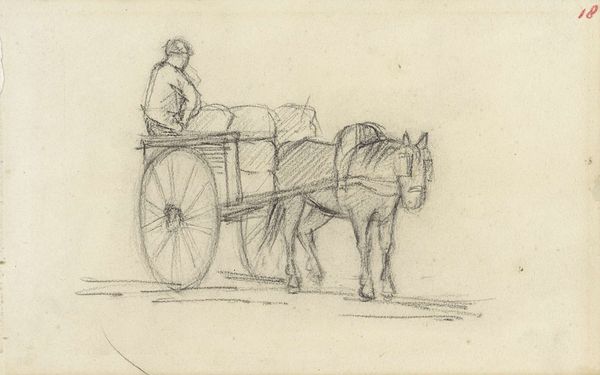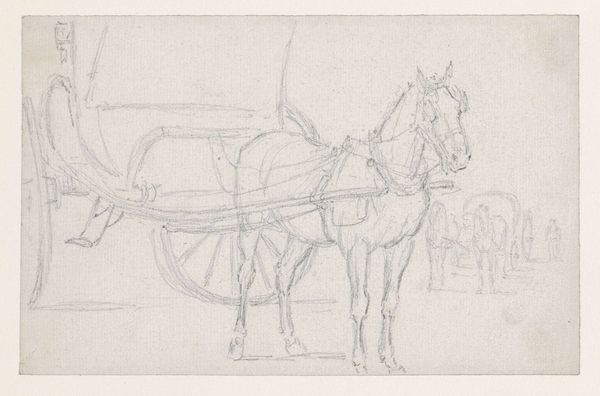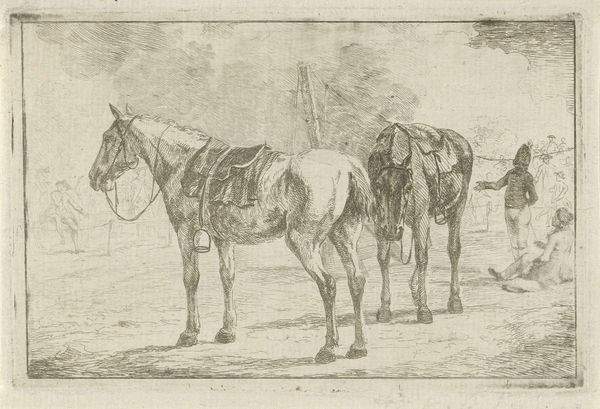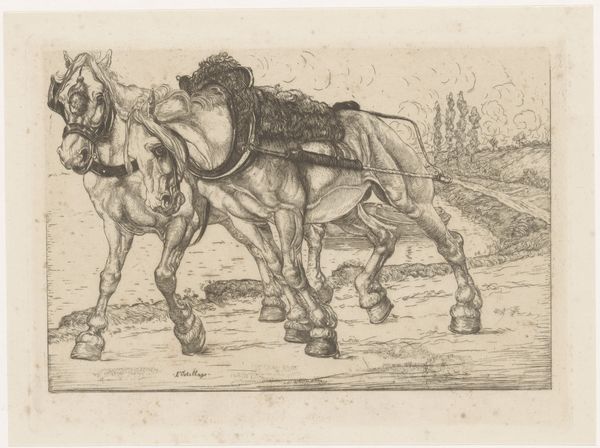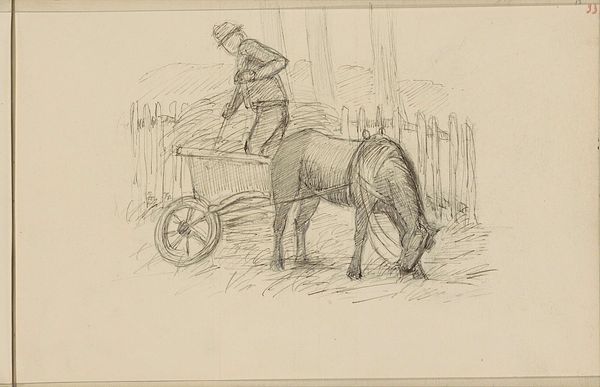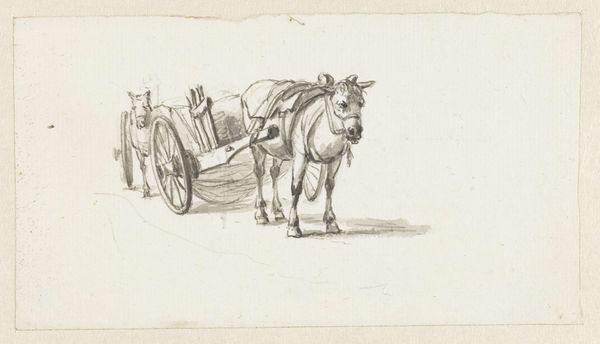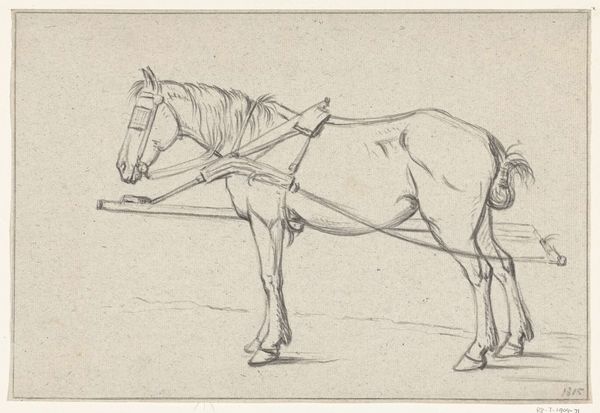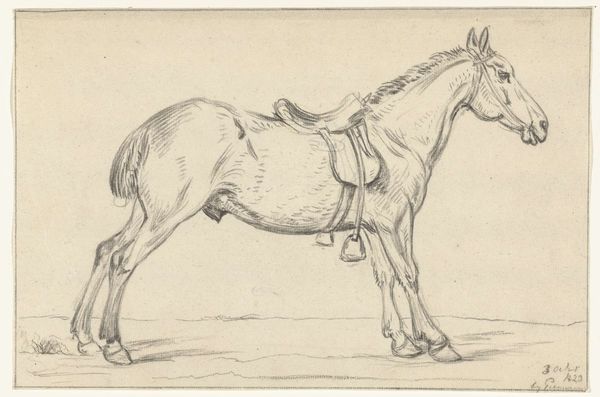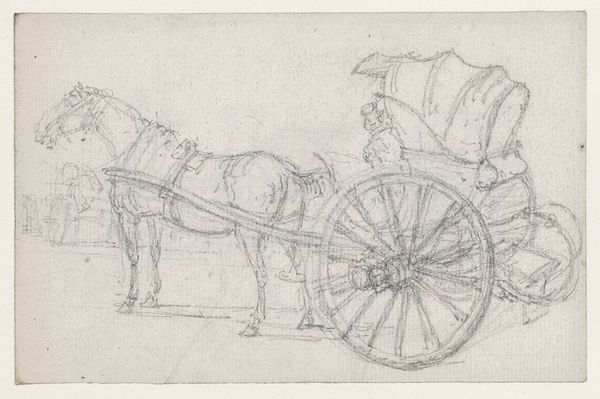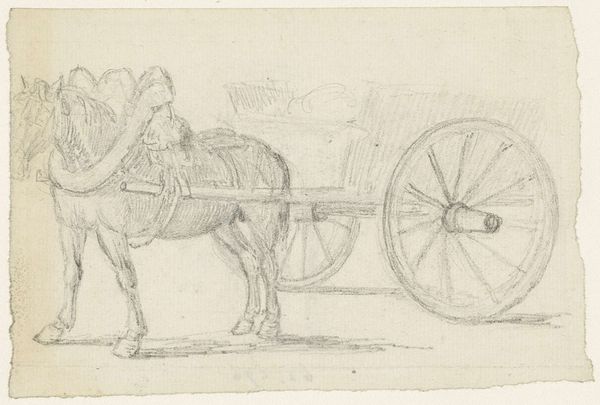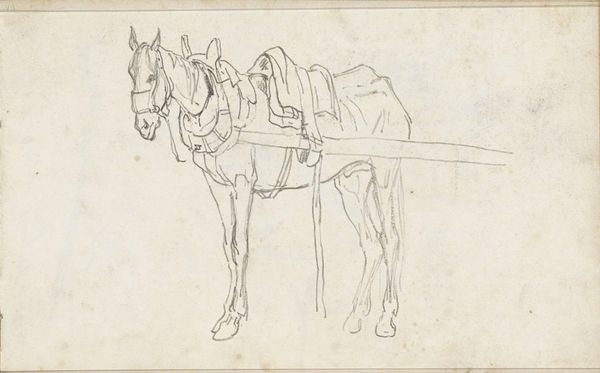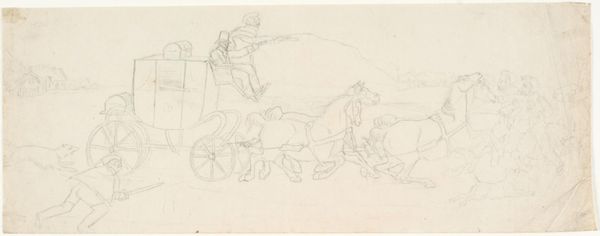
drawing, pencil
#
drawing
#
dutch-golden-age
#
pencil sketch
#
landscape
#
sketch
#
pencil
#
horse
#
sketchbook drawing
#
realism
Dimensions: height 395 mm, width 600 mm
Copyright: Rijks Museum: Open Domain
Curator: Here we have Gerrit Willem Dijsselhof’s pencil drawing, "Studie van paarden voor een zandkar te Parijs"—Study of Horses Before a Sand Cart in Paris. It's estimated to have been created sometime between 1876 and 1924 and is currently held in the collection of the Rijksmuseum. My immediate reaction is one of somberness. Editor: Yes, the image’s gray tones certainly convey that sense. But the quick strokes of the pencil lend the scene dynamism. We feel like we’ve stumbled upon a fleeting moment in the working lives of these animals. The image makes visible what Walter Benjamin described as a pre-industrial “porousness” between humans, animals, and their urban environment. Curator: I agree—Dijsselhof masterfully employs varying degrees of pressure and line thickness to build both volume and spatial recession. Notice how the artist uses dense, dark lines to describe the dominant horse in the foreground and then progressively lighter, less-defined lines to suggest horses and structures fading into the background. This creates depth. Editor: The drawing speaks to a particularly painful element of urbanization: the commodification and exploitation of animal labor. How many unseen, unacknowledged lives were consumed building our cities? These animals quite literally laid the groundwork of modernization and enabled humans to accrue capital and leisure at their expense. Curator: Interesting, but I see the drawing operating primarily within an artistic tradition—specifically within the conventions of realism and landscape drawing prominent during the Dutch Golden Age. The horse itself is also depicted as an object, almost an architectural object with defined planes. Editor: I’m drawn to the context as well. Looking at this drawing, one must also remember that horses, even today, have been central figures in Western imperialism, conquest, and capitalist extraction. We also have to acknowledge the environmental implications: deforestation, feed production, and their general impact on urban ecosystems. Curator: You've given me something to ponder. While my initial inclination is always toward pure visual analysis, understanding an artwork’s socio-political context adds another layer to interpretation. Editor: And for me, exploring the visual language through which societal structures exert their influence opens a way for challenging these norms. Thank you, Dijsselhof, for instigating this exploration!
Comments
No comments
Be the first to comment and join the conversation on the ultimate creative platform.
